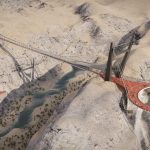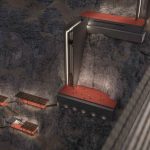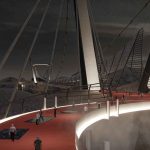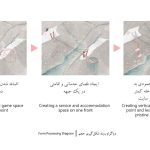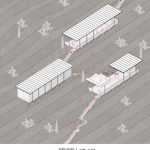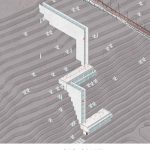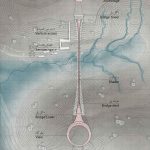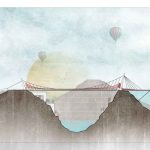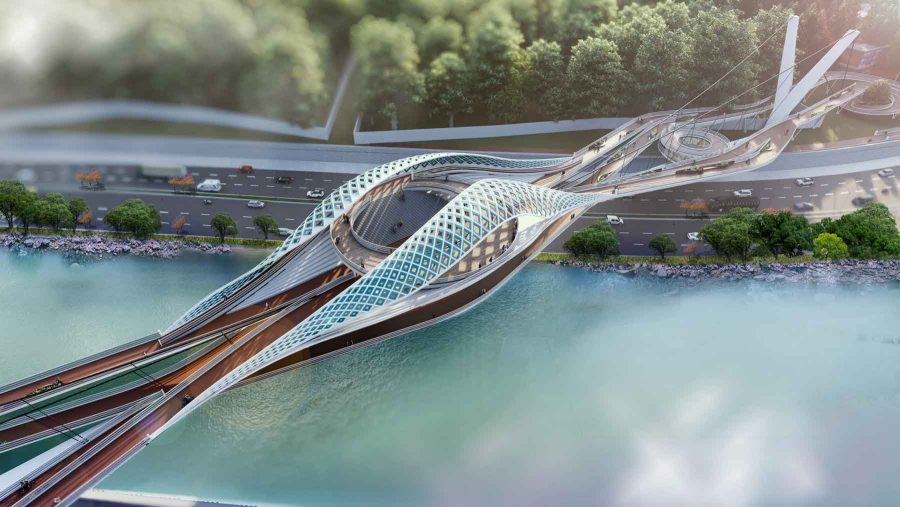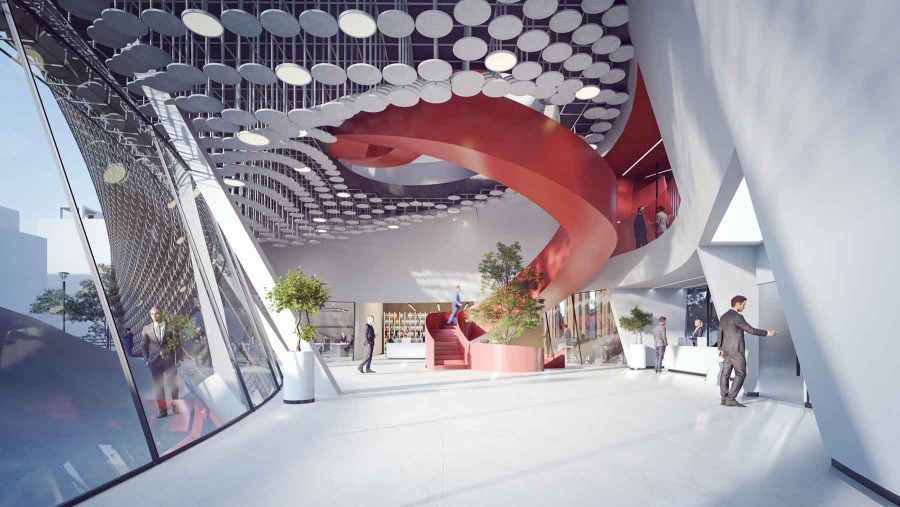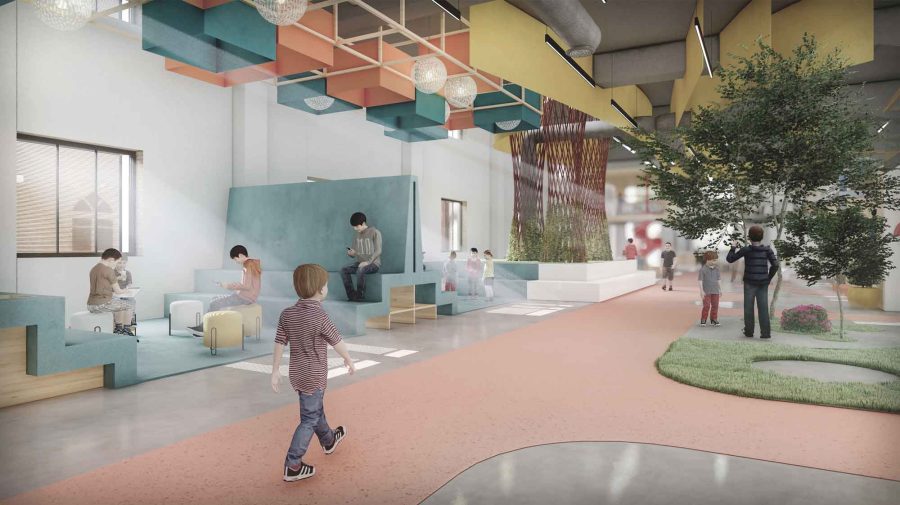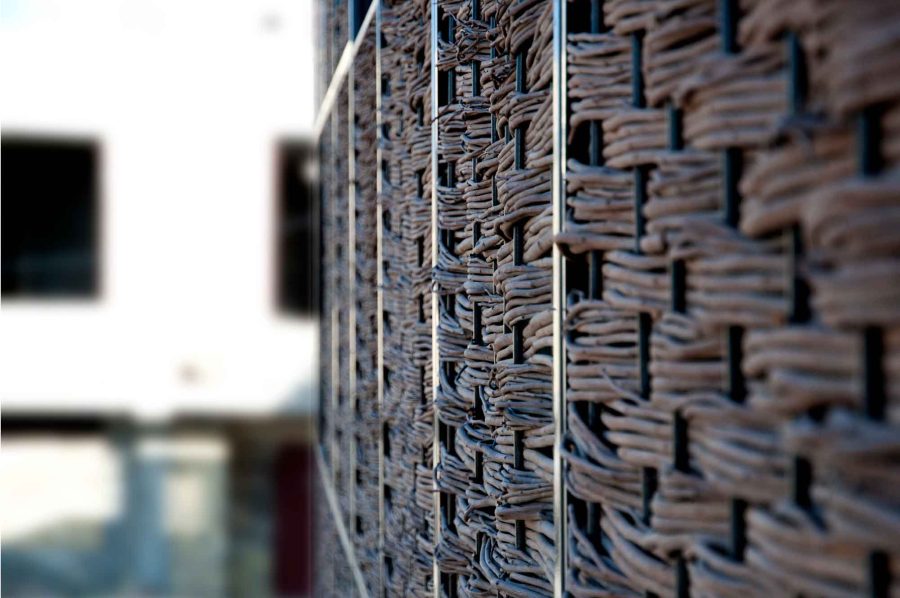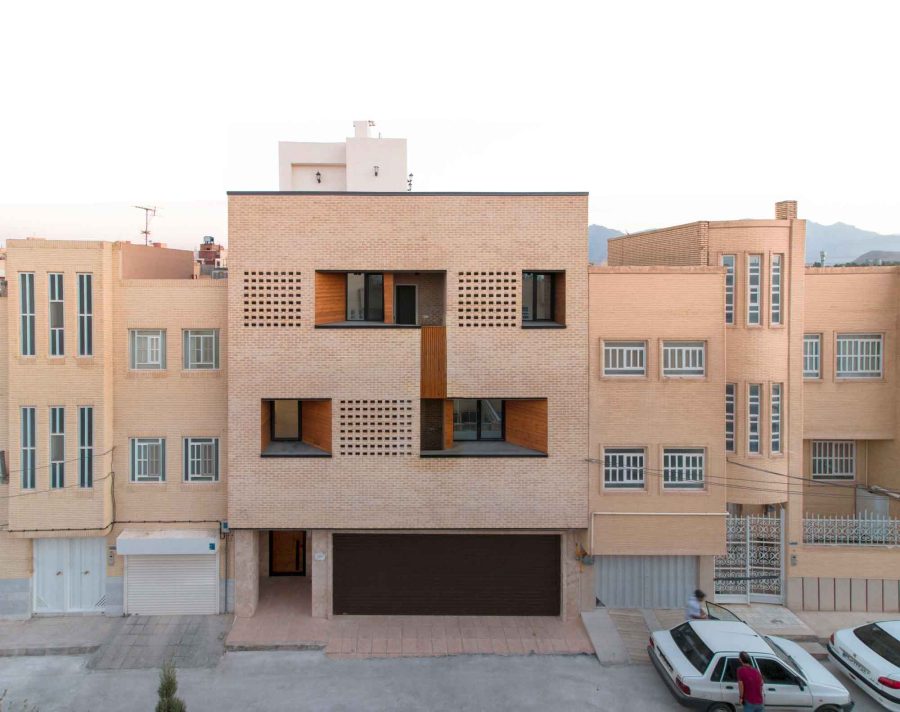The basic challenge of designing the Black Mountain pass was the tension between the plan and its geography. The strategy that was adopted to solve this issue in the design process was to define the bridge as a passageway to watch, which at the end reaches an observatory with a 360-degree view. By defining the access route on one side of the mountain slope, the bridge became a way to reach the observation point on the other side of the mountain, in addition to being a place to watch the pristine nature of the area. Under the observatory, an artificial waterfall was created with a glass floor that doubled the excitement of standing on the observatory, and on the other hand, the weight of the observatory acted as an anchor for the 365-meter bridge deck. The location of the bridge masts was chosen in such a way that it matches the future plans of the region, such as the construction of a cable car, etc. On the other hand, the rotating form of the observatory provides the possibility of adding equipment related to bungee jumping and other related sports. With the middle of the observatory being empty, it is possible to add an elevator and other related equipment for future developments.
The access route was placed on one side of the mountain slope to minimize interference and destruction in the pristine nature of the area. Along the route, spaces for rest were also considered in order to reduce the length of the route in addition to defining diverse views at different altitude levels. According to the climatic conditions of the region, on the bridge deck at a level higher than human vision, a porous shell was designed for making shade.
- Span: 365 m2
- Height above river level: 110 m2
- Bridge tower height: 65 m2
Project Gallery

